If you click on a link and make a purchase we may receive a small commission. Read our editorial policy.
A complete guide to Marvel’s Ultimate Comics
How to read and understand Marvel’s Ultimate Comics
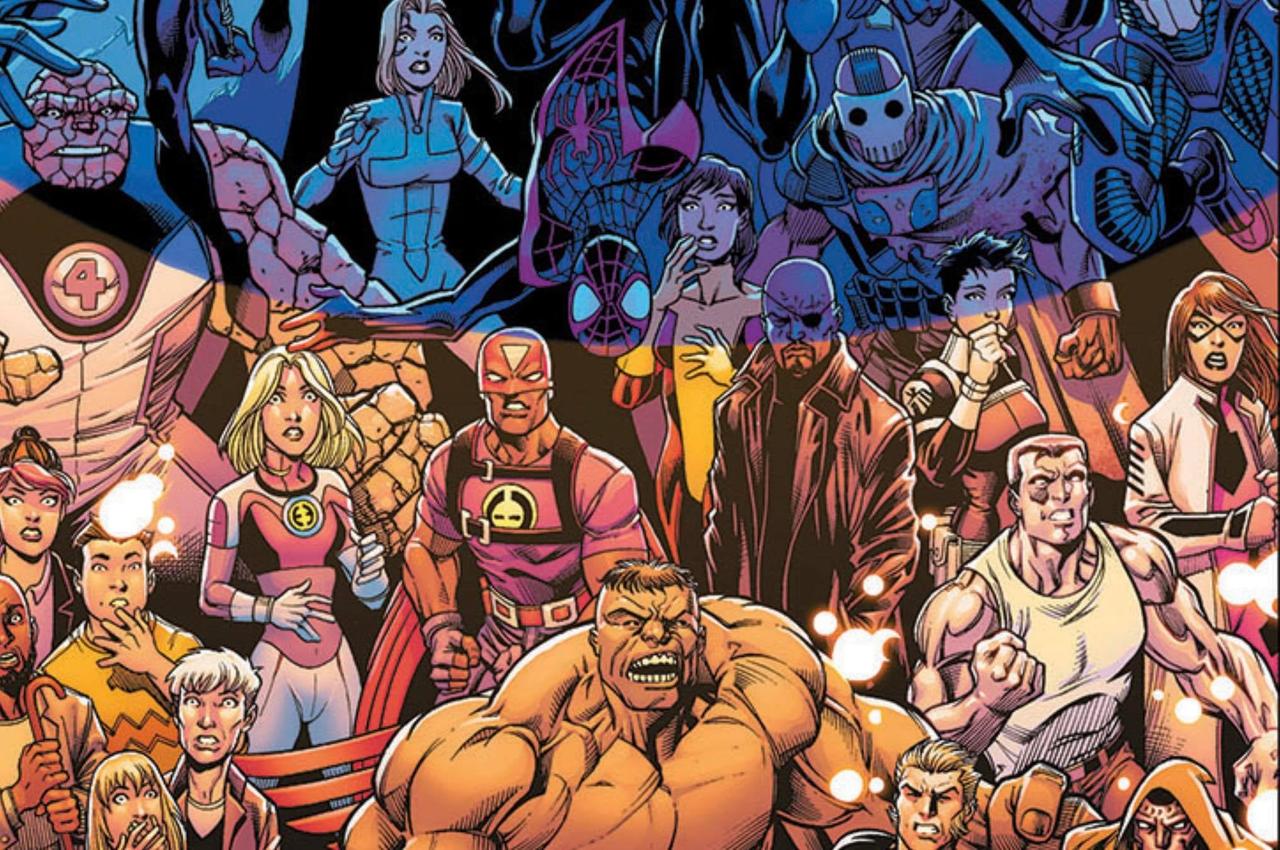
There’s ordinary comics, and there’s Ultimate Comics. It’s more than an alternate universe, it’s Marvel’s creative renaissance. In the year 2000, Marvel launched their Ultimate Comics imprint, which offered fresh takes on their characters for the 21st century. The imprint introduced popular characters such as Miles Morales, and their stories were a heavy influence on the Marvel Cinematic Universe.
Although the Ultimate imprint is now defunct, its legacy will play a central role in the upcoming storyline Ultimate Invasion. If you’re unfamiliar with Marvel’s Ultimate Universe, Popverse is here to give you a crash course. This handy guide will answer all your questions about Ultimate Comics, their characters, their history, and the best ways to read them.
What is Marvel’s Ultimate Comics Universe?
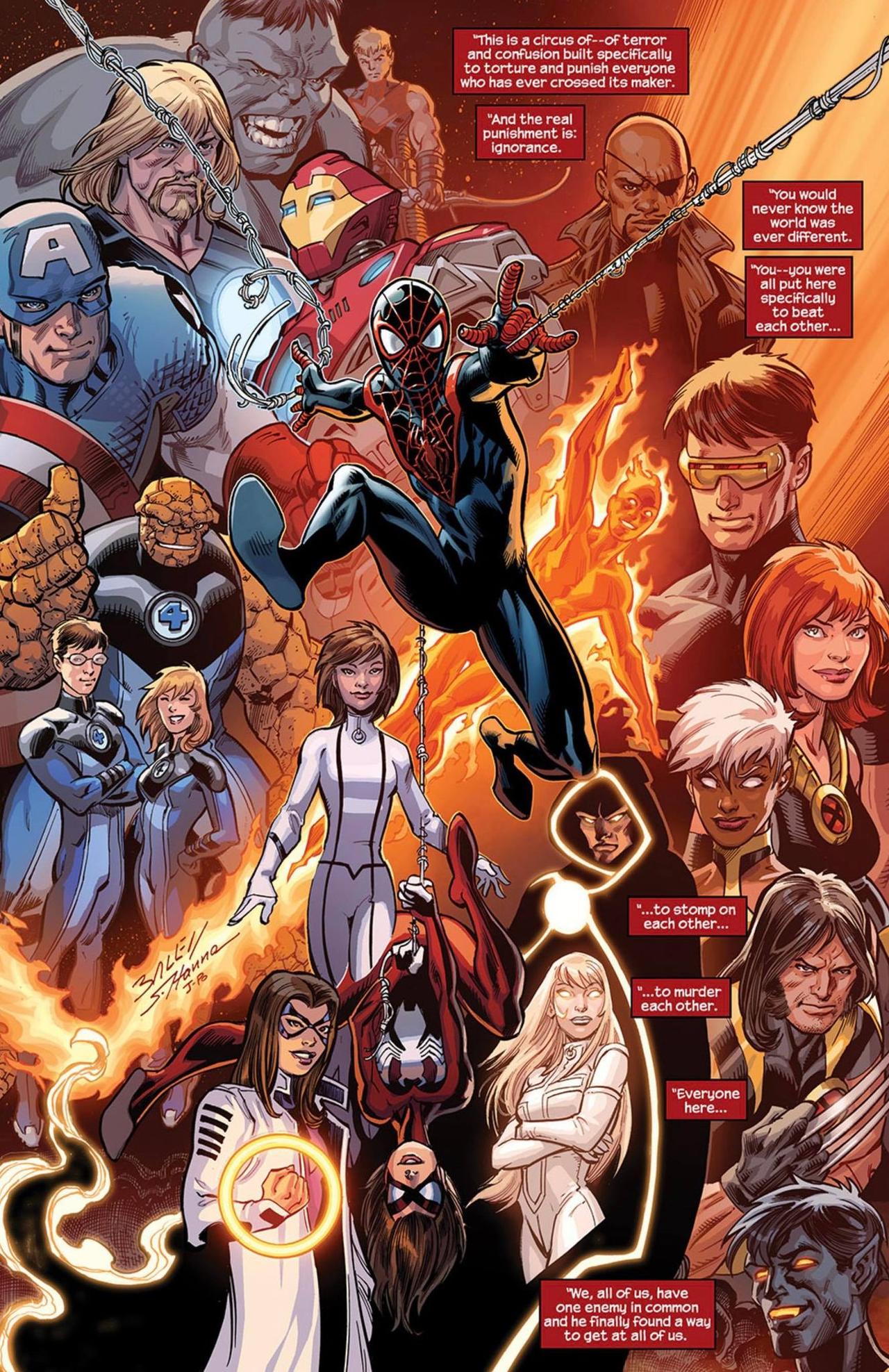
The Ultimate Universe is an alternate continuity within the Marvel Universe.The Ultimate Comics line was designed to be an entry point for new readers. The characters weren’t bogged down by decades of continuity, making it easier for the audience to keep up. The imprint also served as a playground where creators were able to do things they could never do in the mainstream Marvel Universe. For example, Captain America became President of the United States, and characters like Wolverine were killed off for good.
Titles set in the Ultimate Universe were published under the imprint Ultimate Comics. The official designation for the continuity is Earth-1610, but most people simply refer to it as the Ultimate Universe. Comics set in the universe would typically have the word Ultimate somewhere in their title. For example, if you picked up a copy of Ultimate Vision or Ultimate Iron Man, then you knew you weren’t reading about the 616 versions of the characters. This extended to events and mini-series, such as Ultimate Extinction and Ultimate War. Ultimate Comics were very good at branding.
The Ultimate imprint began in 2000 with Ultimate Spider-Man #1, and concluded 15 years later with Ultimate End #5. At that time, the Ultimate Universe was seemingly destroyed during the crossover event Secret Wars. However, concepts from the Ultimate Universe have continued to have a presence in Marvel’s mainstream continuity. Don’t worry, we’ll go into more detail about that later in the article.
What are some of the major differences between Ultimate Comics and Marvel’s mainstream continuity?
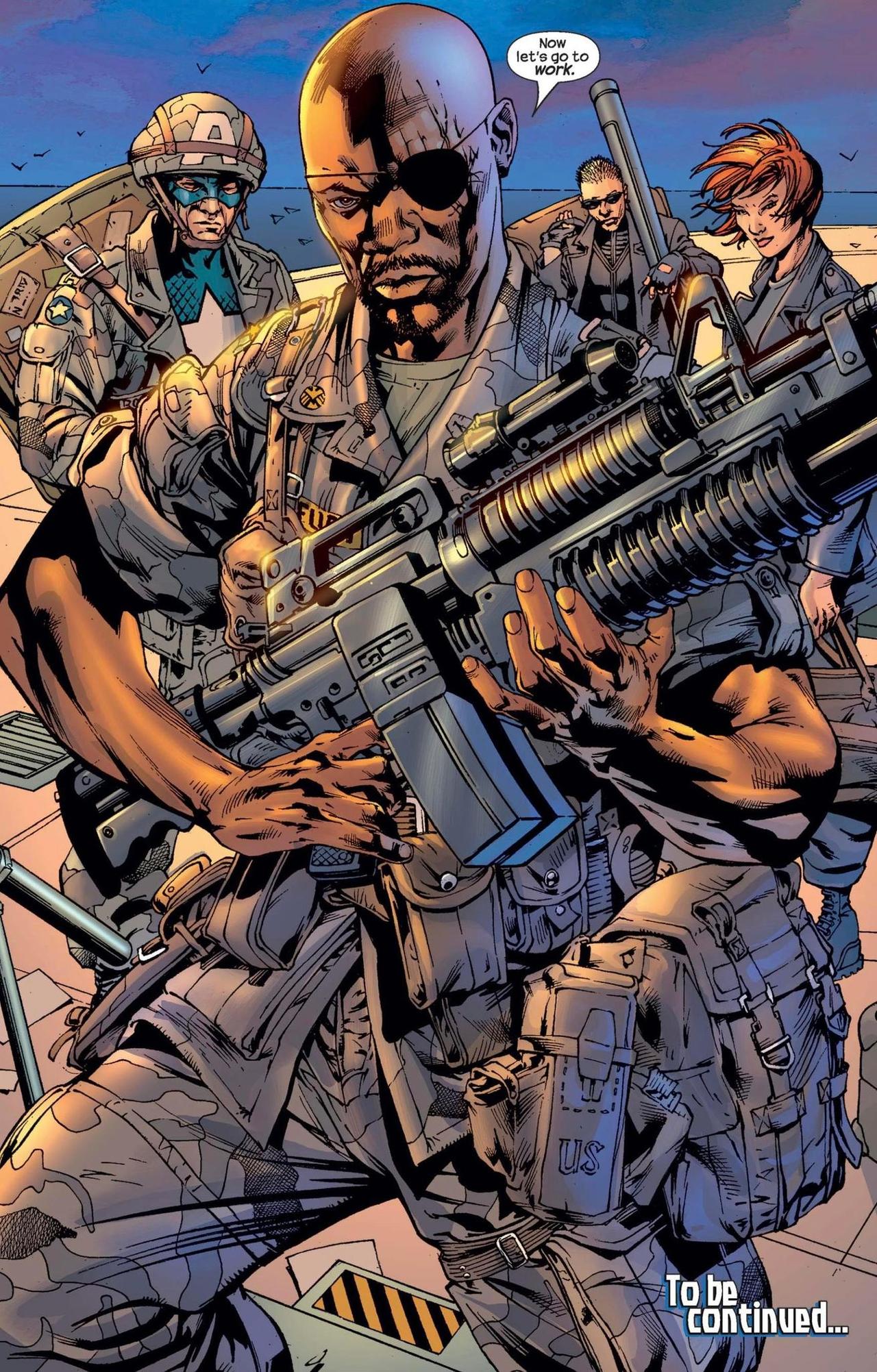
On a surface level, the Ultimate Universe is similar to Marvel’s mainstream continuity. There are many familiar characters and concepts. Peter Parker is a high school student who gets bitten by a genetically altered spider and becomes Spider-Man. Tony Stark is a business tycoon who suits up as Iron Man. While Ultimate Comics keep the core principles of the Marvel Universe, there are some major differences between the two continuities.
Some superheroes were given modified origins. Bruce Banner became the Hulk after an attempt to recreate Captain America’s Super Soldier Serum went wrong. Jessica Drew was a gender-swapped clone of Peter Parker. The most famous difference was the decision to model Nick Fury after the actor Samuel L. Jackson. This depiction of Fury was later used in the Marvel Cinematic Universe, and Marvel’s 616 continuity. Many villains were also revamped, such as Norman Osborn. The 616 version of Norman Osborn becomes the Green Goblin by putting on a costume, while his Ultimate counterpart transforms into a giant monster. Similarly, the Ultimate version of the Venom symbiote was created in a lab, which is a departure from its original extraterrestrial origins.
The Ultimate Universe also took a more grounded approach than the mainstream Marvel Universe. While fantastical elements were explored in some stories, for the most part, the Ultimate line aimed to tell more realistic stories. When Thor was introduced in the Ultimates (2002), there was some ambiguity over if he was a genuine Norse god, or simply an empowered man with delusions of godhood. The grounded approach also led to different storytelling sensibilities. An Ultimate comic was typically paced differently, leading to story decompression and more character development. Aunt May’s conversation with her therapist took up the entirety of Ultimate Spider-Man #45 (2003), something that would have been unheard of in a mainstream 616 at the time.
In some cases, the personalities of Ultimate heroes were rougher than their 616 counterparts. Captain America had a hatred towards the French, and Hank Pym would sadistically torture his wife Janet. Mr. Fantastic was a morally corrupt character, who eventually became the villain known as the Maker. Not everyone in the Ultimate Universe was a jerk, but these personality differences allowed the imprint to play with new scenarios and tell stories that could ever be told in the Marvel 616.
Has the Ultimate Comics universe ever crossed over with Marvel’s mainstream continuity?
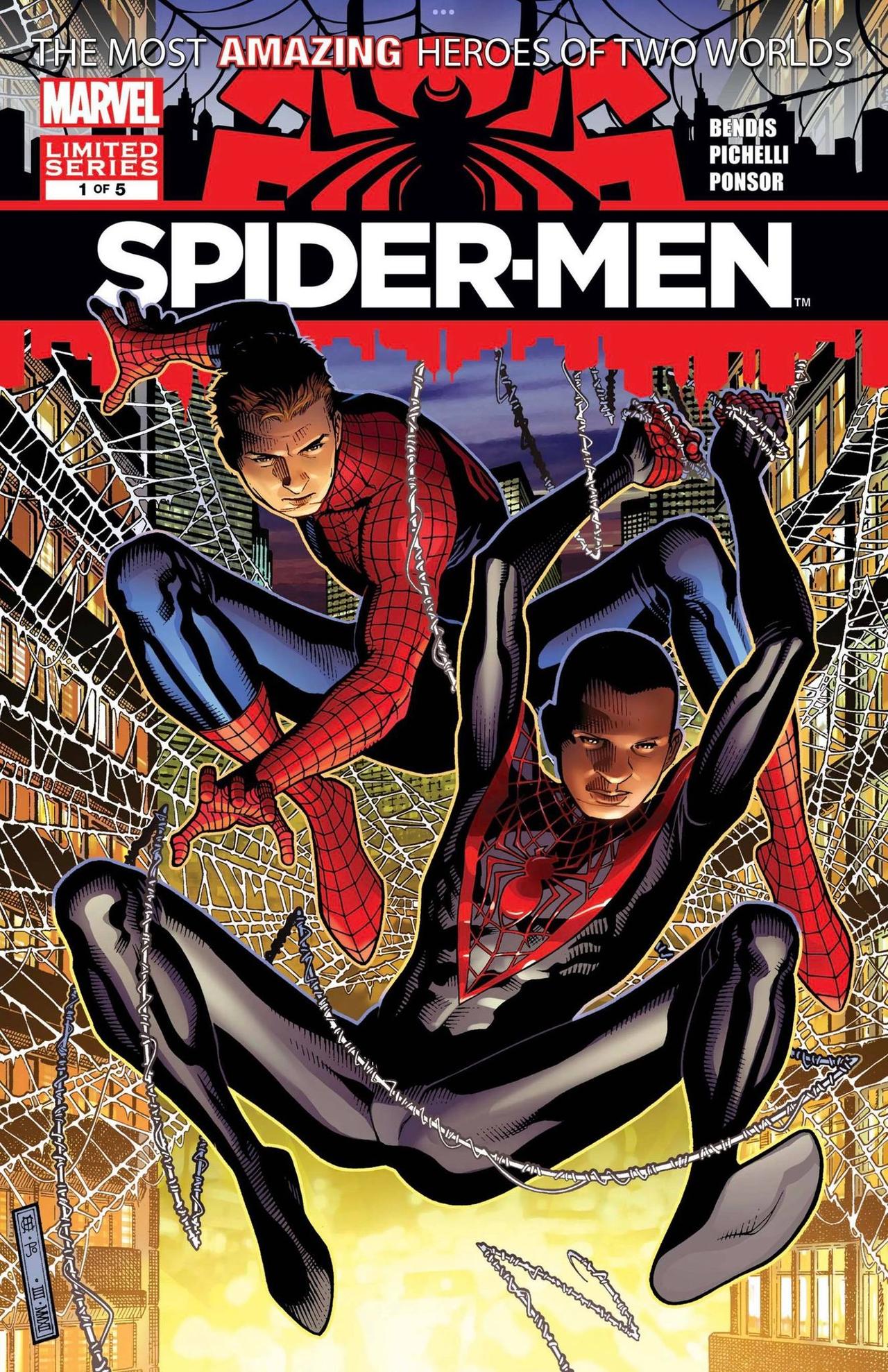
For many years, Marvel had a strict policy against crossovers between the Ultimate Universe and Earth-616. While speaking at San Diego Comic-Con in 2005, Marvel editor-in-chief Joe Quesada said that a potential crossover between the two universes would mean that the company “had officially run out of ideas.” However, this idea was revisited when Marvel was looking for ways to celebrate Spider-Man’s 50th anniversary in 2012. Marvel published Spider-Men, a limited series that featured the first meeting between Peter Parker and Miles Morales.
At the time Miles was exclusively an Ultimate Universe character, and the Peter Parker from his world was dead. For his part, the 616 version of Peter was surprised to see all the changes in his world, including a version of Gwen Stacy who was alive. Quesada defended his 2005 comments in an interview with Comic Book Resources. “Am I not allowed to grow at my job? Am I not allowed to rethink certain positions,” Quesada said.
Spider-Men opened the door for more crossovers with the mainstream Marvel Universe, but only on a sporadic basis. All-New X-Men #31-36 (2014) featured a trip to the Ultimate Universe. The crossover event Cataclysm featured the 616 version of Galactus trying to make a meal out of the Ultimate Universe. Namor and his group known as the Cabal traveled to the Ultimate Universe in Avengers #41 (2015). The largest crossover between the universes happened in the 2015 storyline Secret Wars, which wound up changing the Ultimate Universe forever.
What is the current status of the Ultimate Universe?
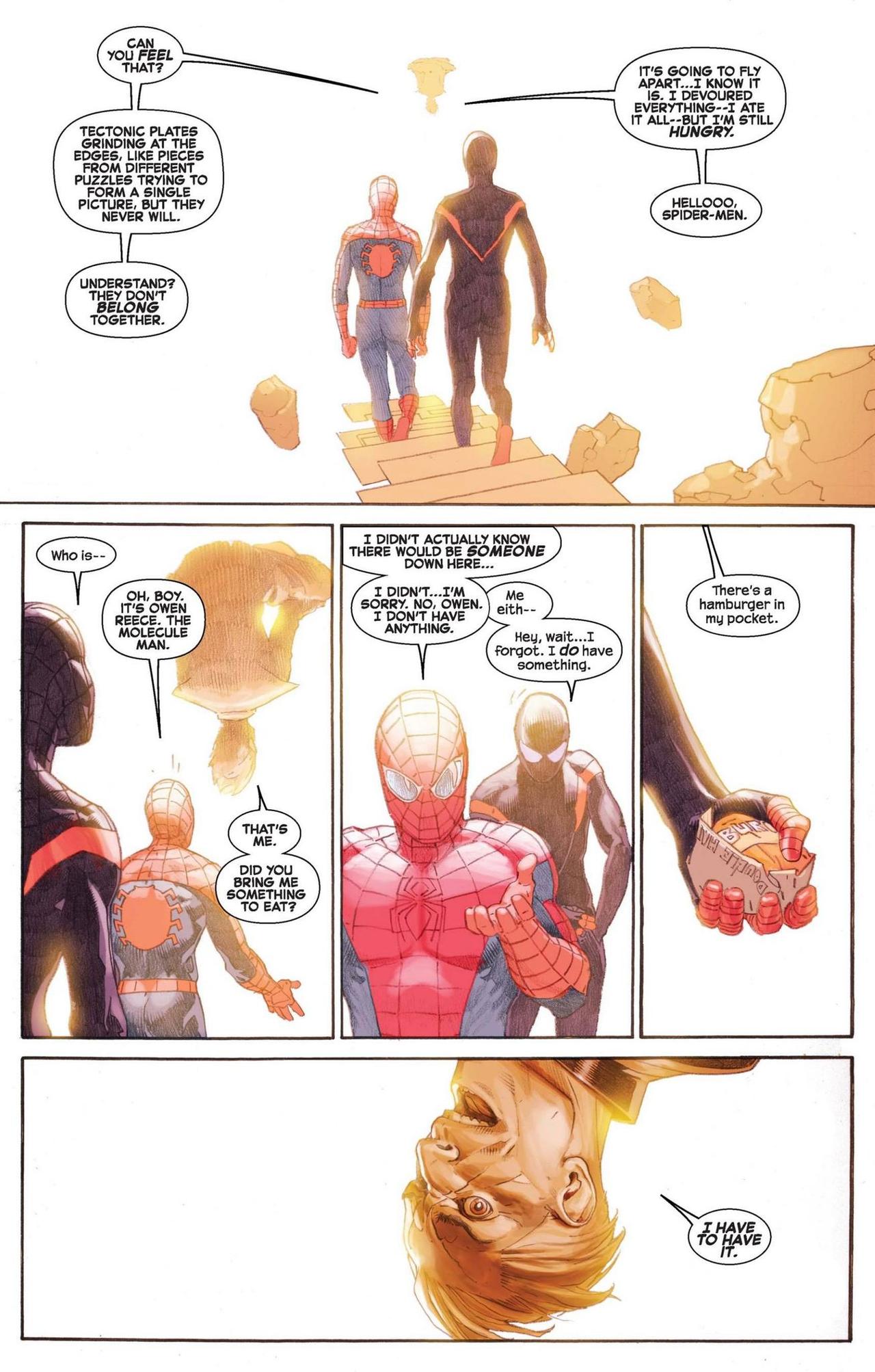
The short answer is the Ultimate Universe still exists, but it is no longer an active imprint. For a time, it was thought that the Ultimate Universe had perished during the 2015 storyline Secret Wars. However, the 2017 limited series Spider-Men II revealed that the Ultimate Universe still exists. In a funny sense, the survival of the Ultimate Universe can be traced back to an old cheeseburger.
During the Secret Wars storyline, the multiverse was unraveling due to a series of events known as Incursions. These Incursions involved various realities crashing into one another. The Ultimate Universe was destroyed during one of the Incursions. Miles Morales survived by stowing away aboard an interplanetary life-raft.
The villainous Doctor Doom temporarily obtained godlike powers, and remade reality. Doom created Battleworld, which took elements from the various worlds in the Marvel multiverse, including the Ultimate Universe. Doom was eventually defeated, and Marvel’s main 616 reality was restored. During all this, Miles Morales ran into the all-powerful Molecule Man, who was feeling hungry.
Miles offered the Molecule Man a cheeseburger he had been holding onto since before the destruction of the universe. Grateful for the act of generosity, when Molecule Man helped rebuild Earth-616, he transplanted Miles’ friends and family, and other selected individuals from the Ultimate comics reality. Many of these individuals had no memories of their lives in the Ultimate Universe and believed that they had always lived on Earth-616.
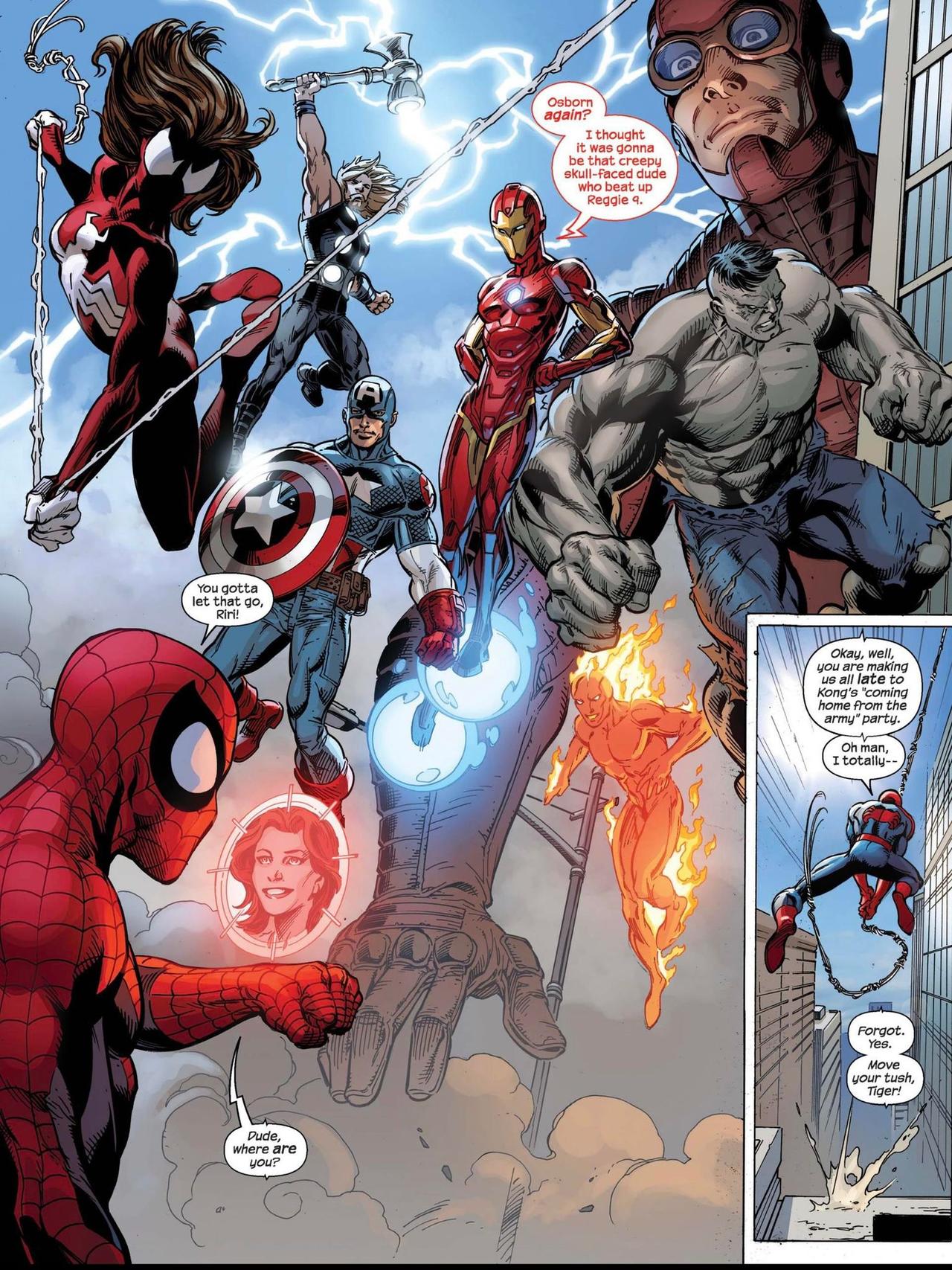
In addition to the individuals Molecule Man saved, other heroes and villains from the Ultimate universe migrated to Earth-616. The mutants Jimmy Hudson, Guardian, Quicksilver, Mach Two, and Armor were transported into the mainstream Marvel Universe during the Incursion. The Ultimate version of Reed Richards also survived and has become a reoccurring Marvel villain. Artifacts from the Ultimate Universe have also made their way onto Earth-616, such as Thor’s hammer Mjolnir. The appearance of Ultimate Mjolnir was a major plot point in the 2016 series The Unworthy Thor.
Spider-Men II #5 (2017) ends with the villain Ultimatum (who is actually the Miles Morales of Earth-616) traveling to the Ultimate Universe. This was the first indication that the Ultimate universe still existed, along with many of its heroes and villains. It’s unknown how the Ultimate Universe survived the Incursion, but Secret Wars did end with Mr. Fantastic vowing to restore the multiverse. Perhaps Reed restored the Ultimate universe sometime after Secret Wars.
Although the Ultimate universe still exists, many of the heroes and villains of Earth-616 are unaware of its survival. The Maker has been searching for a way back to his old home, as seen in Venom #20 (2019). The Maker’s quest to find the Ultimate Universe will take center stage in the 2023 summer event Ultimate Invasion.
How did Ultimate Comics influence the Marvel Cinematic Universe?
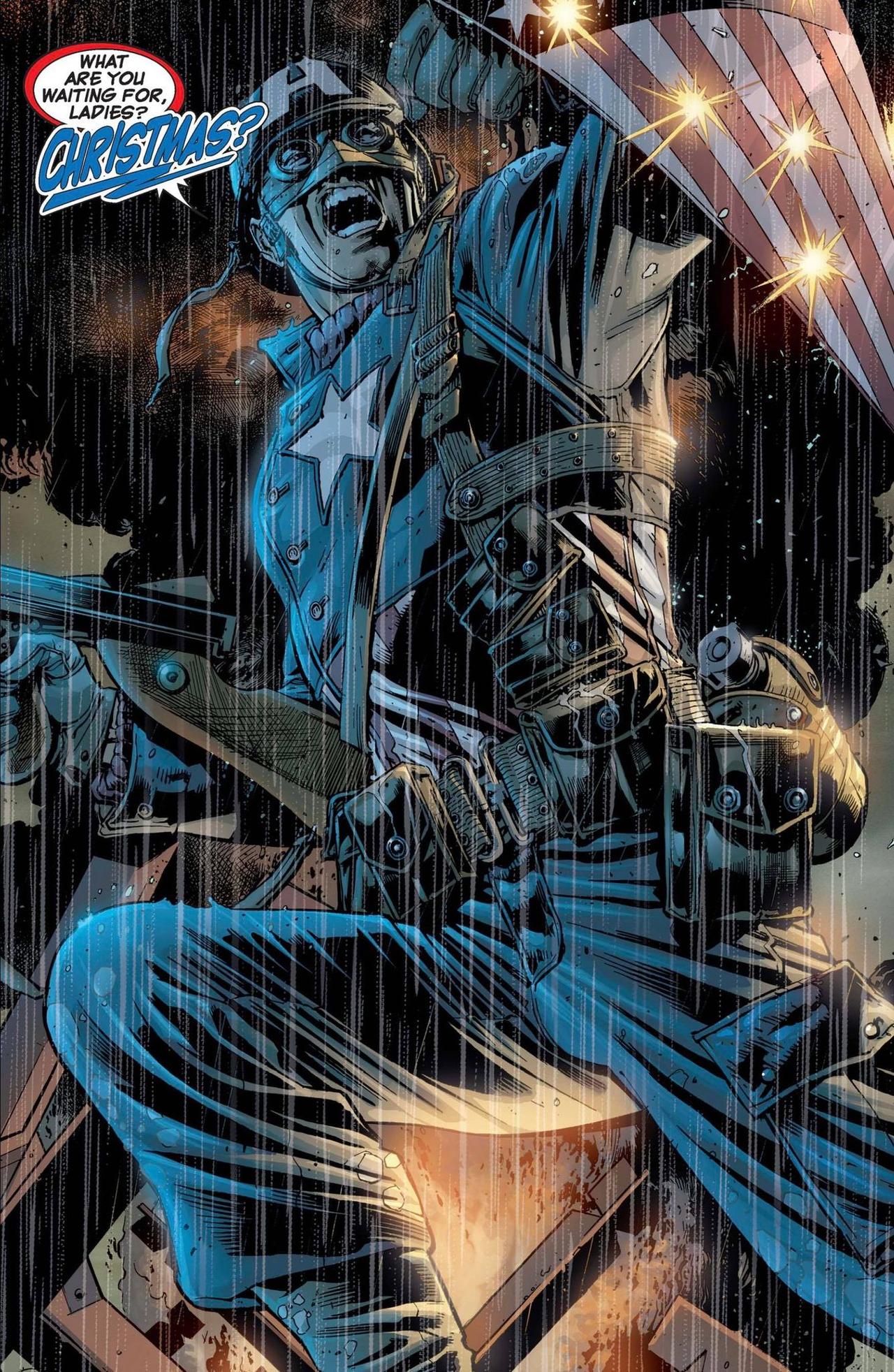
The Ultimate Comics heavily influenced the MCU movies, particularly during phase one. This makes sense when you consider that MCU had a similar mission statement to Ultimate Comics. Both were trying to modernize the classic Marvel characters and tell accessible stories for a mainstream audience. In 2008, the success of the Ultimate Universe was fairly recent, so it makes sense that Marvel Studios looked to the imprint for inspiration.
Robert Downey Jr’s flippant take on Tony Stark was closer to the Ultimate version of Iron Man. The looks of many of the characters, especially Hawkeye and Captain America, were modeled after their Ultimate Comics counterparts. If you read The Ultimates (2002) you’ll be surprised to see how much the 2012 film The Avengers borrowed from the series, including the basic plot about S.H.I.E.L.D. forming a super-team to fight the alien Chitauri was taken from The Ultimates. In fact, some of the scenes from the comic were directly adapted into the film.
The casting of Samuel L. Jackson as Nick Fury is one of the biggest pieces of influence the Ultimate Universe had on the MCU. It might surprise modern readers to learn that The Ultimates illustrated Nick Fury to look like Jackson years before the actor had been cast in the role. At the time Ultimate #1 was published, drawing Fury to look like Jackson was just a fun way to make the comic seem cinematic. There was no indication Fury would even be featured in any future Marvel films.
Then Samuel L. Jackson showed up as Nick Fury during the post-credits scene of Iron Man (2008), changing how the character would be perceived for a generation. This depiction of Fury would be used on merchandise, video games, and other pieces of Marvel media. The mainstream Marvel Universe introduced Nick Fury Jr., the son of the 616 version of Nick Fury. Fury Jr. was also a dead ringer for Jackson, and soon replaced his father as the prominent Nick Fury in the Marvel Universe. In other words, the Ultimate Universe’s influence on the MCU was so strong that it literally changed the mainstream Marvel Universe.
Other forms of Ultimate media
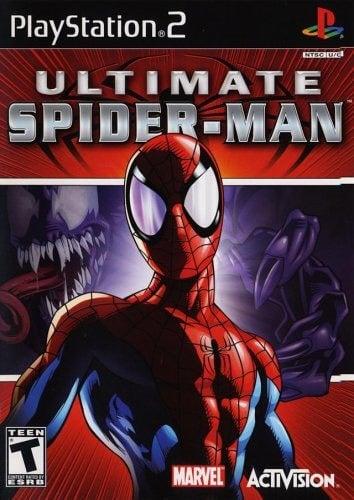
If you want to experience the complete Ultimate Universe, you’ll have to look beyond comics. In 2005 Activision released the console game Ultimate Spider-Man. The video game was not an adaptation of Ultimate Spider-Man, but a brand new story set within the continuity of the comic book series. Ultimate Spider-Man writer Brian Michael Bendis worked closely with Activision, helping to craft the story for the game. In addition, the game was stylized to look like moving images from a comic book, and the characters were designed to match Mark Bagley’s illustrations from the comic series.
Ultimate Spider-Man #123-128 would retell some of the events of the video game. However, there were some variations in the sequence of events, calling the game’s continuity into question. In 2006 a prequel titled Spider-Man: Battle for New York was released for the Game Boy Advance and Nintendo DS. The game featured art by Ron Lim.
In 2007, Pocket Books published the novel The Ultimates: Tomorrow Men. The book was meant to bridge the gap between The Ultimates and The Ultimates 2. However, The Ultimates 2 wound up contradicting the events of the novel. A sequel titled The Ultimates: Against All Enemies was published later that year. The novels are probably not canon, but they’re still an interesting tie-in to the Ultimate Universe.
How to read Marvel’s Ultimate comics in release order
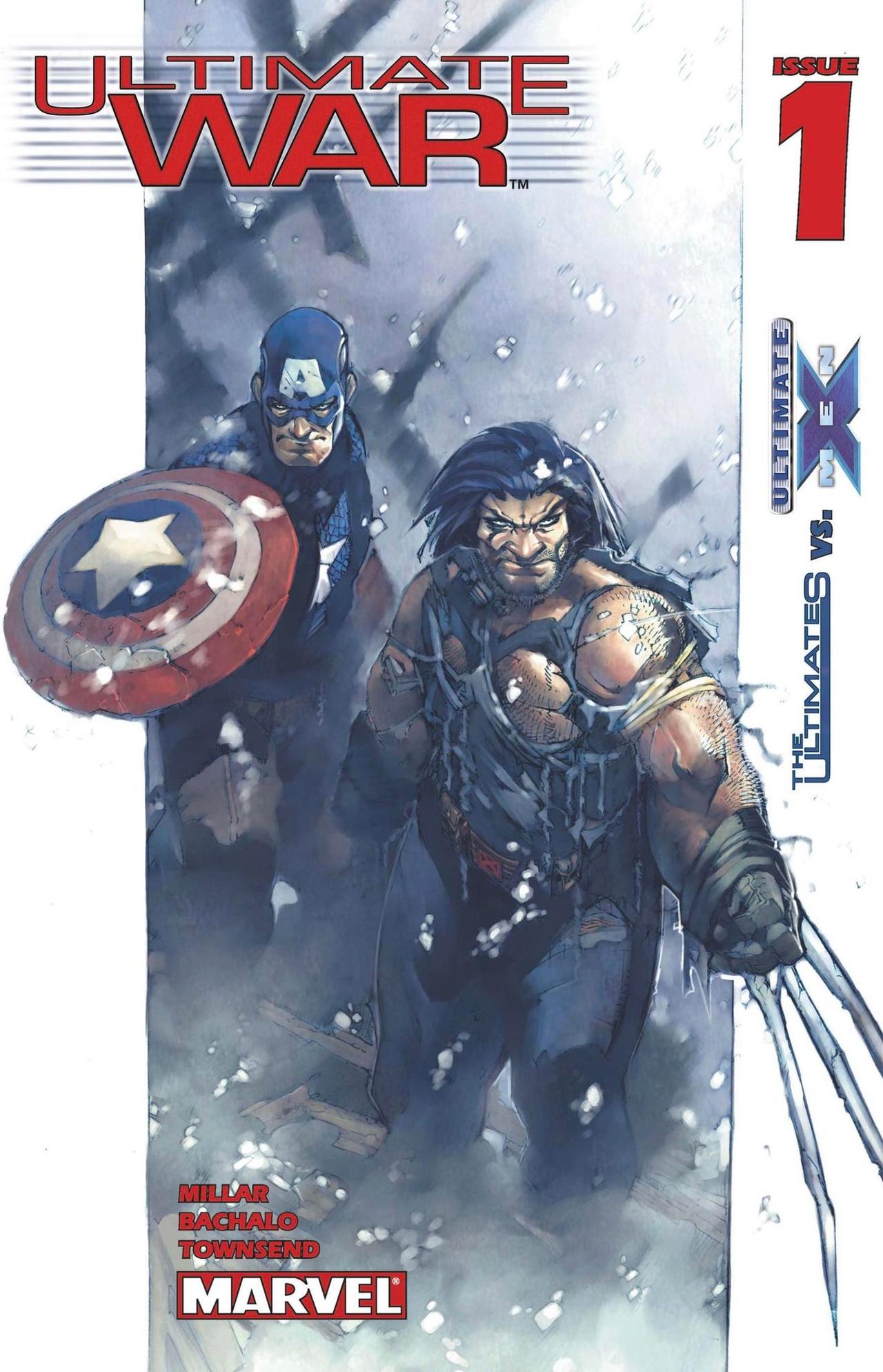
If you want to read every series published under the Ultimate Comics imprint, here is a complete list. This lists all the series in the order they were first published. If you prefer chronological reading orders, this article also contains lists for tentpole characters like Spider-Man, the X-Men, and the Ultimates. A note: Ultimate Marvel Team-Up introduced versions of the Fantastic Four that were later contradicted when the title Ultimate Fantastic Four was launched. As a result, some of Ultimate Marvel Team-Up is not considered canon. Despite that, the series is included here to give a complete look at the Ultimate Comics imprint.
Similarly, the 2015 series Secret Wars is not technically part of the Ultimate Comics imprint, but we’re including it here because of the pivotal role it plays in the saga of the Ultimate Universe. Spider-Men and Spider-Men II are included for similar reasons. Storylines like All-New X-Men #31-36 feature trips to the Ultimate Universe, but they’re part of the 616 publishing line, and will not be included here.
- Ultimate Spider-Man #1-113 (2000) Note: Also contains a Wizard special and several annuals.
- Ultimate Marvel Team-Up #1-16 (2001)
- Ultimate X-Men #1-100 (2001) Note: Also contains a Wizard special and several annuals.
- The Ultimates #1-13 (2002) Note: Contains two annuals.
- Ultimate Spider-Man Super Special #1 (2002)
- Ultimate Daredevil and Elektra #1-4 (2002)
- Ultimate Adventures #1-6 (2002)
- Ultimate War #1-4 (2002)
- Ultimate Six #1-7 (2003)
- Ultimate Fantastic Four #1-60 (2004) Note: Contains two annuals.
- Ultimate Elektra #1-5 (2004)
- Ultimate Nightmare #1-5 (2004)
- The Ultimates 2 #1-13 (2005)
- Ultimate Iron Man #1-10 (2005)
- Ultimate Secret #1-4 (2005)
- Ultimate Wolverine vs. Hulk #1-6 (2005)
- Ultimate X4 #1-2 (2005)
- Ultimate Extinction #1-5 (2006)
- Ultimate Vision #0-5 (2006)
- Ultimate Power #1-9 (2006)
- The Ultimates Saga #1 (2007)
- Ultimate Iron Man II #1-5 (2007)
- Ultimate Human #1-4 (2008)
- The Ultimates 3 #1-5 (2008)
- Ultimate Origins #1-5 (2008)
- March on Ultimatum Saga #1 (2008)
- Ultimate Captain America Annual #1 (2008)
- Ultimate Fantastic Four/Ultimate X-Men Annual #1 (2008)
- Ultimate Hulk Annual #1 (2008)
- Ultimate X-Men/Fantastic Four Annual #1 (2008) Note: Yes, this is a separate comic from Fantastic Four/Ultimate X-Men Annual #1.
- Ultimatum #1-5 (2009)
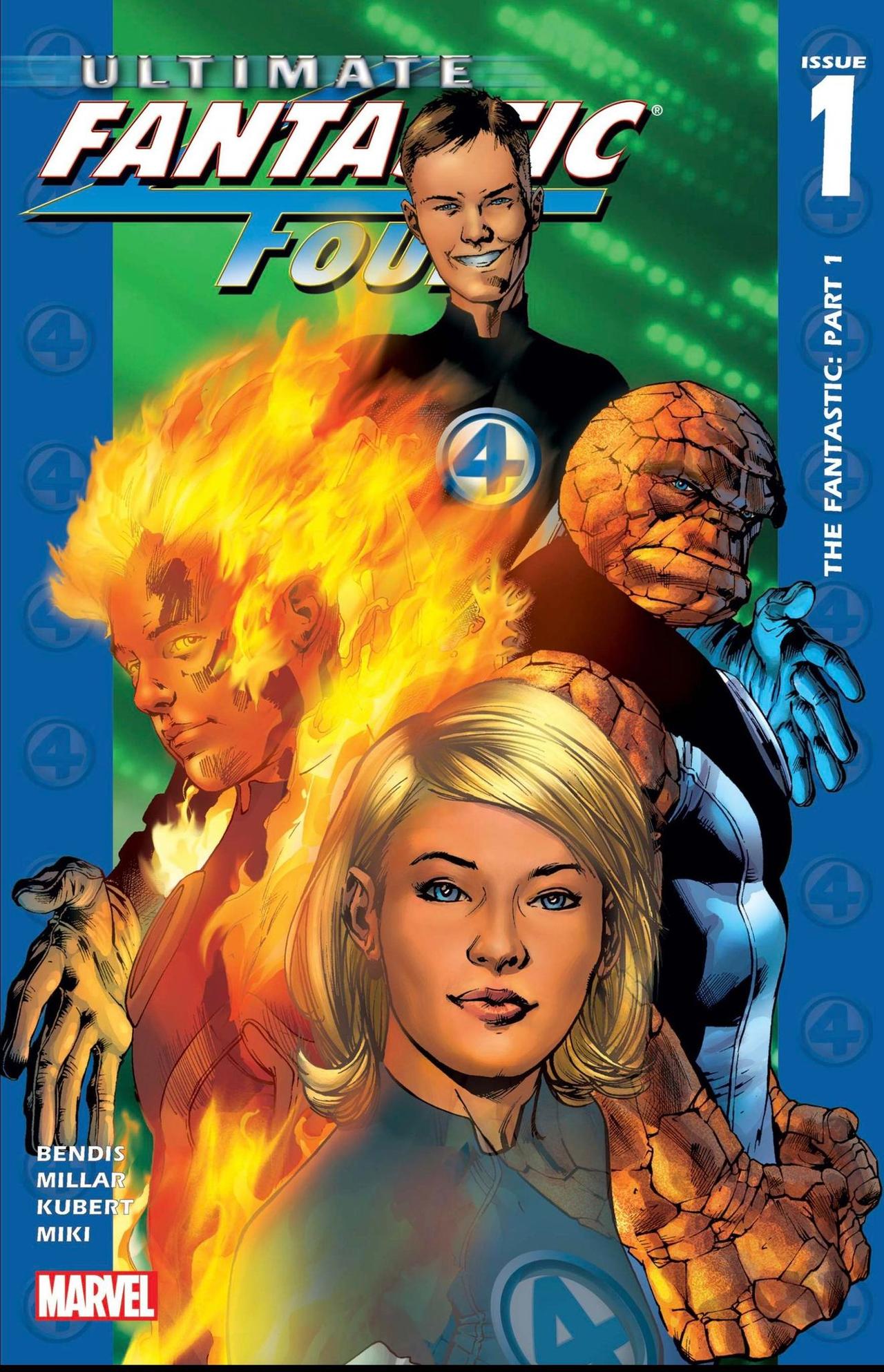
All the major crossover events in the Ultimate Comics universe
Like most comic universes, the Ultimate Universe has had its fair share of crossover events. These storylines bring the Ultimate heroes together to face various threats. If you’re looking to read all the Ultimate Universe crossover events, here’s how you would do it.
- Ultimate Extinction #1-5 (2006)
- Ultimatum #1-5 (2008)
- Cataclysm: The Ultimates’ Last Stand #1-5 (2013)
Secret Wars (2015) is not included on here because although Earth-1610 is included, it is not considered an Ultimate Universe crossover event. Secret Wars is a crossover event driven by Earth-616 characters. For something to be considered an Ultimate Universe crossover event, it needs to primarily run in the Ultimate Comics imprint, and be driven by their characters. However, if you’re reading the Ultimate crossover events and want to see how the characters end up, then read Secret Wars #1-9 (2015) as an epilogue.
How to read Ultimate Spider-Man in chronological order
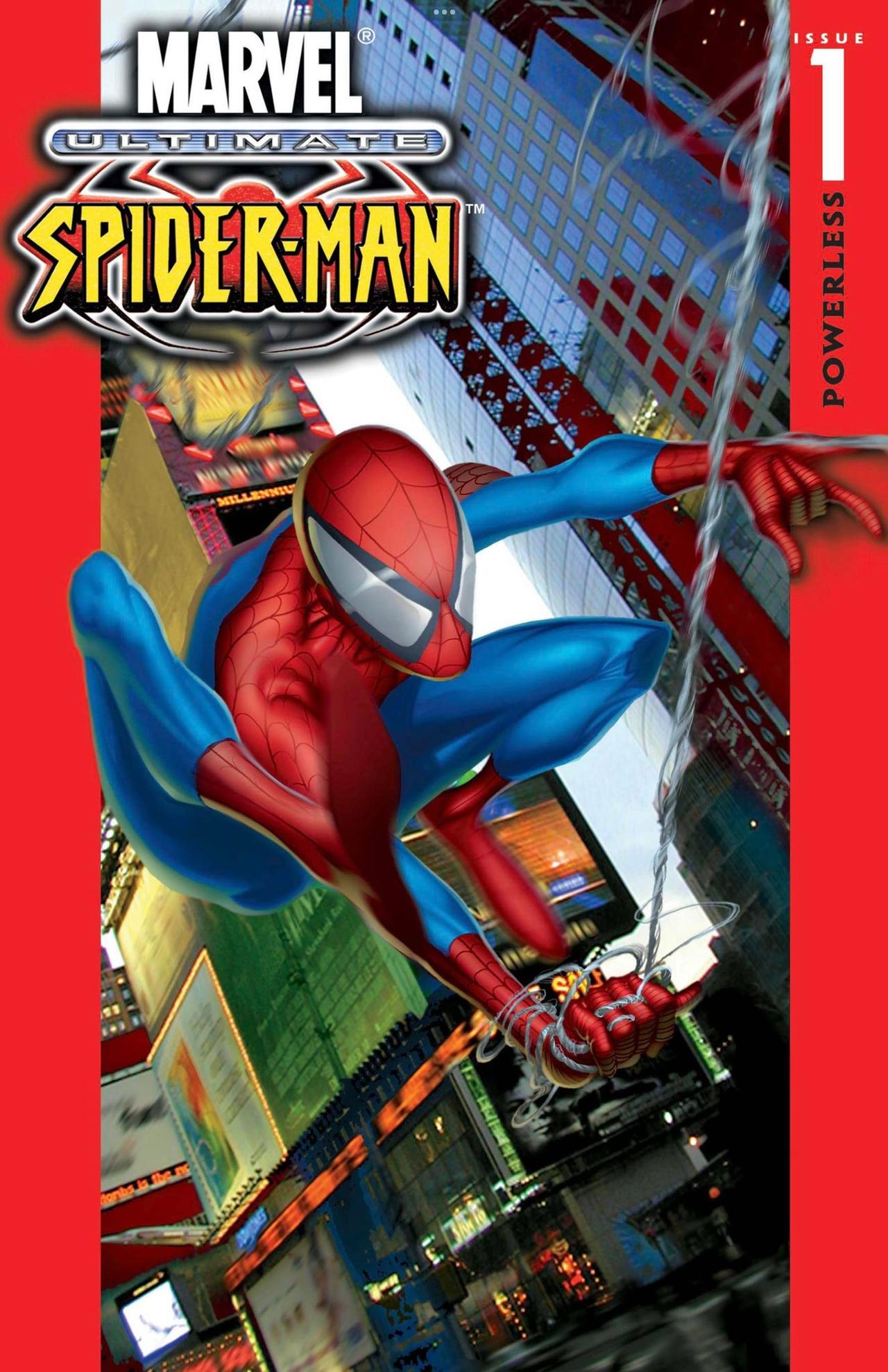
The Ultimate Comics line kicked off in 2000 with the launch of Ultimate Spider-Man. The series reimagined the Spider-Man mythos through the lens of the 21st century. Peter Parker, his classmates, and his world were updated for the new millennium. For example, his Aunt May and Uncle Ben were aged hippies. Peter Parker worked as the Daily Bugle’s website administrator rather than as a photographer. Every issue of Ultimate Spider-Man was written by Brian Michael Bendis. Mark Bagley penciled the first 111 issues, which gave the Bendis/Bagley partnership the longest run in a Marvel comic, if you go by issues published. The Stan Lee/Dan DeCarlo partnership on Millie the Model lasted 11 years, but fewer issues were published during that period.
Ultimate Spider-Man was relaunched in 2009 but returned to its original numbering in 2011. Peter Parker died battling Norman Osborn in Ultimate Spider-Man #160. A biracial teenager named Miles Morales became the new Spider-Man when the series was relaunched as Ultimate Comics: Spider-Man. The introduction of Miles Morales is one of the most influential moves the Ultimate Comics line ever pulled off. The character has had the lead role in multiple ongoing comics, starred in an Oscar winning animated film, and has become a household name.
Below is a list of Ultimate Spider-Man comics in chronological order. This list only includes comics where Spider-Man played a significant role. If Peter or Miles only made a guest appearance, and it didn’t advance their stories, then the comic isn’t included. The chronology is a bit murky with satellite titles like Ultimate Marvel Team-Up, crossover events, and annuals, but Popverse has done the best to make sense of these discrepancies by placing these stories in the best possible order.
This chronological list was put together by comparing publishing dates, story placements in trade paperback collections, comparing various online chronology lists, and examining the pages of the comics themselves.
The Peter Parker Era- Ultimate Spider-Man #1-7 (2000)
- Ultimate Marvel Team-Up #1 (2001)
- Ultimate Spider-Man #8 (2001)
- Ultimate Marvel Team-Up #2-3 (2001)
- Ultimate Spider-Man #9-13 (2001)
- Ultimate Marvel Team-Up #4-10 (2001)
- Ultimate Spider-Man #14-16 (2001)
- Ultimate Marvel Team-Up #11-13 (2002)
- Ultimate Spider-Man #17-21 (2002)
- Ultimate Marvel Team-Up #14-16 (2002)
- Ultimate Spider-Man #22-27 (2002)
- Ultimate Spider-Man Super Special #1 (2002)
- Ultimate Spider-Man #28-32 (2002)
- Ultimate Spider-Man #1/2 (2002)
- Ultimate Spider-Man #33-46 (2003)
- Ultimate Six #1-7 (2003)
- Ultimate Spider-Man #47-85 (2003)
- Ultimate Spider-Man Annual #1 (2005)
- Ultimate Spider-Man #86-96 (2006)
- Ultimate Spider-Man Annual #2 (2006)
- Ultimate Spider-Man #97-120 (2006)
- Ultimate Spider-Man Annual #3 (2008)
- Ultimate Spider-Man #121-128 (2008)
- Ultimatum #1-5 (2008)
- Ultimate Spider-Man #129-133 (2009)
- Ultimatum: Spider-Man Requiem #1-2 (2009)
- Ultimate Spider-Man (Vol 2) #1-15 (2009)
- Ultimate Spider-Man #150-154 (2011)
- Ultimate Comics: Enemy #1-4 (2010)
- Ultimate Comics: Mystery #1-4 (2010)
- Ultimate Comics: Doom #1-4 (2011)
- Ultimate Spider-Man #155-160 (2011)
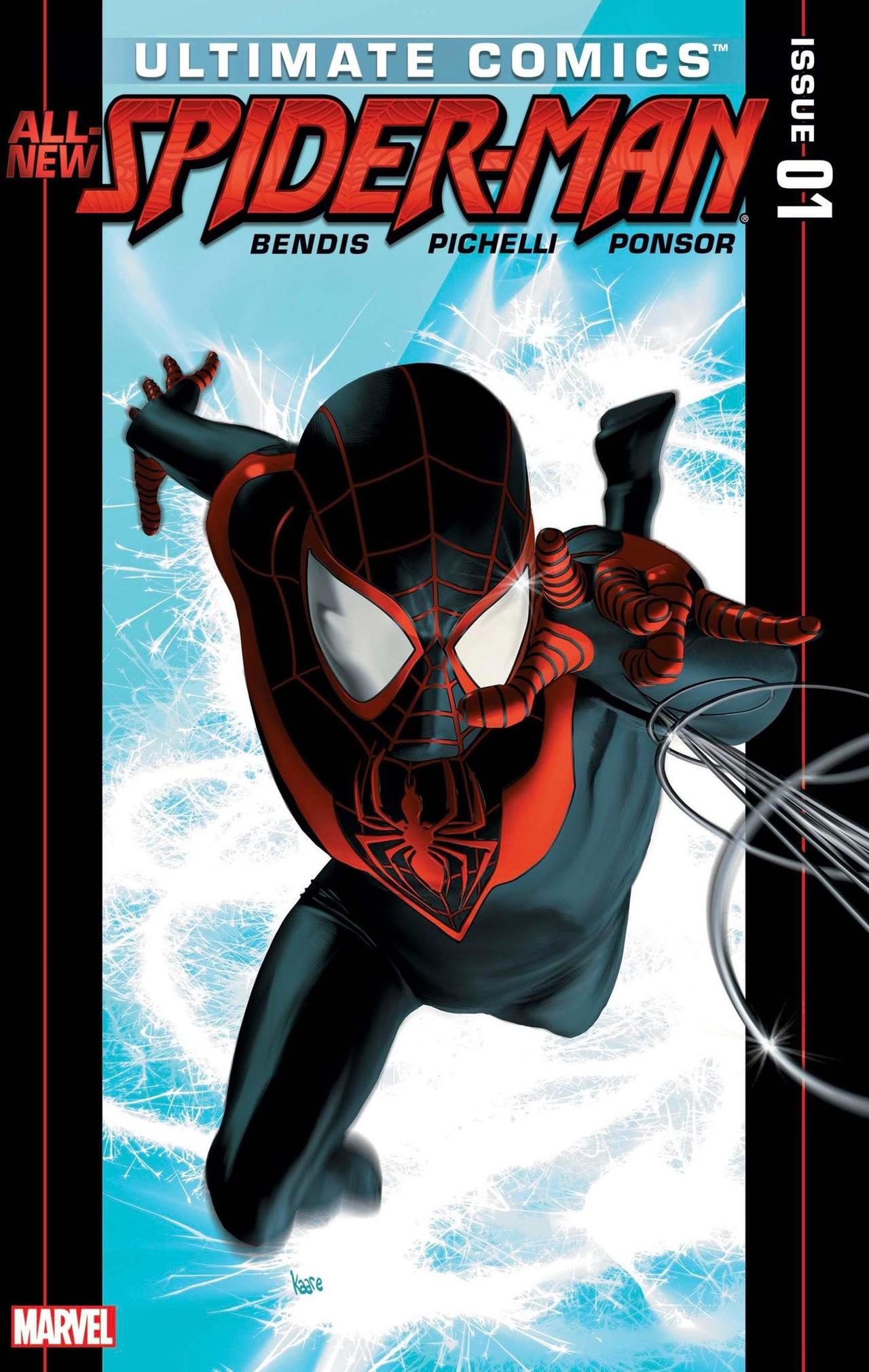
- Ultimate Comics: Fallout #1-6 (2011)
- Ultimate Comics: Spider-Man #1-16 (2011)
- Ultimate Comics: Spider-Man #16.1 (2012)
- Ultimate Comics: Spider-Man #17-18 (2012)
- Spider-Men #1-5 (2012)
- Ultimate Comics: Spider-Man #19-28 (2013)
- Cataclysm: Ultimate Spider-Man #1-3 (2013)
- Ultimate Spider-Man #200 (2014)
- Ultimate End #1-5 (2015)
- Spider-Men II #1-5 (2017)
If all of this seems daunting, then I would recommend reading the trade paperback collections. The trades are easily numbered, and they include the annuals and specials so you won’t have to jump around in your reading. Ultimate Spider-Man was also paced in a way where the stories flow much better if you read them as trade paperbacks. For a full look at Spider-Man's role in crossover events and specials, refer to their first list. If you just want a basic look at Spider-Man's story in the Ultimate universe, here is the trade paperback reading order.
- Ultimate Spider-Man Volume 1-22
- Ultimate Comics Spider-Man Volume 1-4</li>
- Ultimate Comics Spider-Man Volume 1-5
You’ve probably noticed that there are two different series called Ultimate Comics Spider-Man. This unfortunate double-naming could be confusing, but there is an easy solution. The first series you should read will have the Peter Parker version of Spider-Man on the covers. The second Ultimate Comics Spider-Man series will have Miles Morales on the covers.
How to read Ultimate X-Men in chronological order
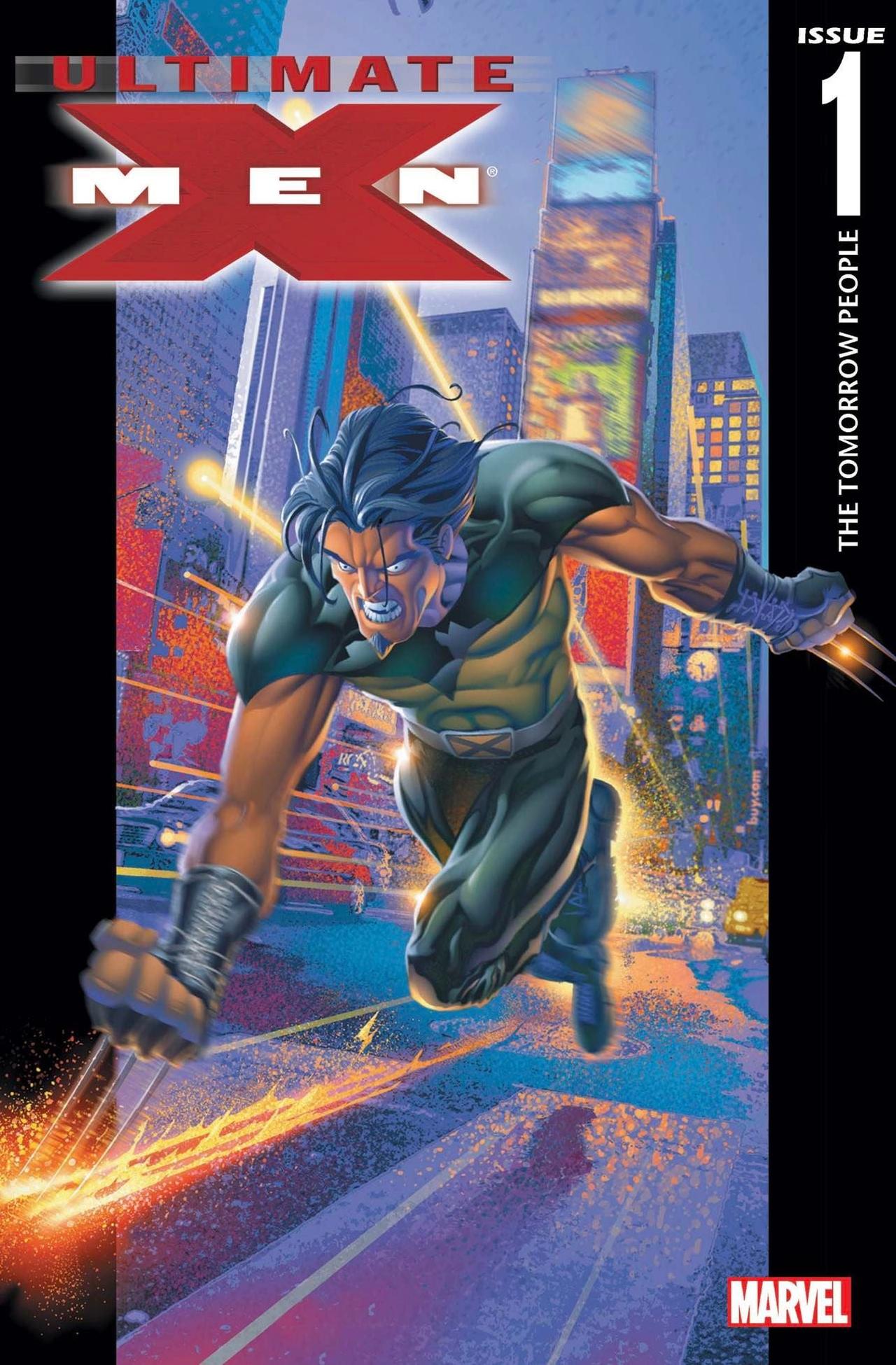
In 2001 Marvel launched Ultimate X-Men, which brought their classic mutant team into the 21st century. The Bryan Singer directed X-Men film had been released the previous year, and the movie heavily influenced the comic series. Ultimate X-Men took many of the elements from the mainstream Marvel Universe, combining the aesthetic and sensibilities from the popular 2000 film.
The X-Men were changed forever during the events of Ultimatum. Xavier, Cyclops, Wolverine, and Magneto were all killed during the crossover storyline. This left X-Men without steady leadership, causing many of the mutants to flee underground. After a brief hiatus, the series was relaunched as Ultimate Comics: X-Men in 2011.
Below is a list of Ultimate X-Men comics in chronological order. This list only includes comics where the X-Men, or one of their members, played a significant role. The chronology was a bit murky with satellite titles, crossover events, and annuals. For example, a one-shot titled X-Men ½ was released in 2002, but the trade paperback collection places it after Ultimate X-Men #65, which was published 2 years later. Like the Spider-Man list, Popverse has done our best to make sense of these discrepancies by placing these stories in the best possible order.
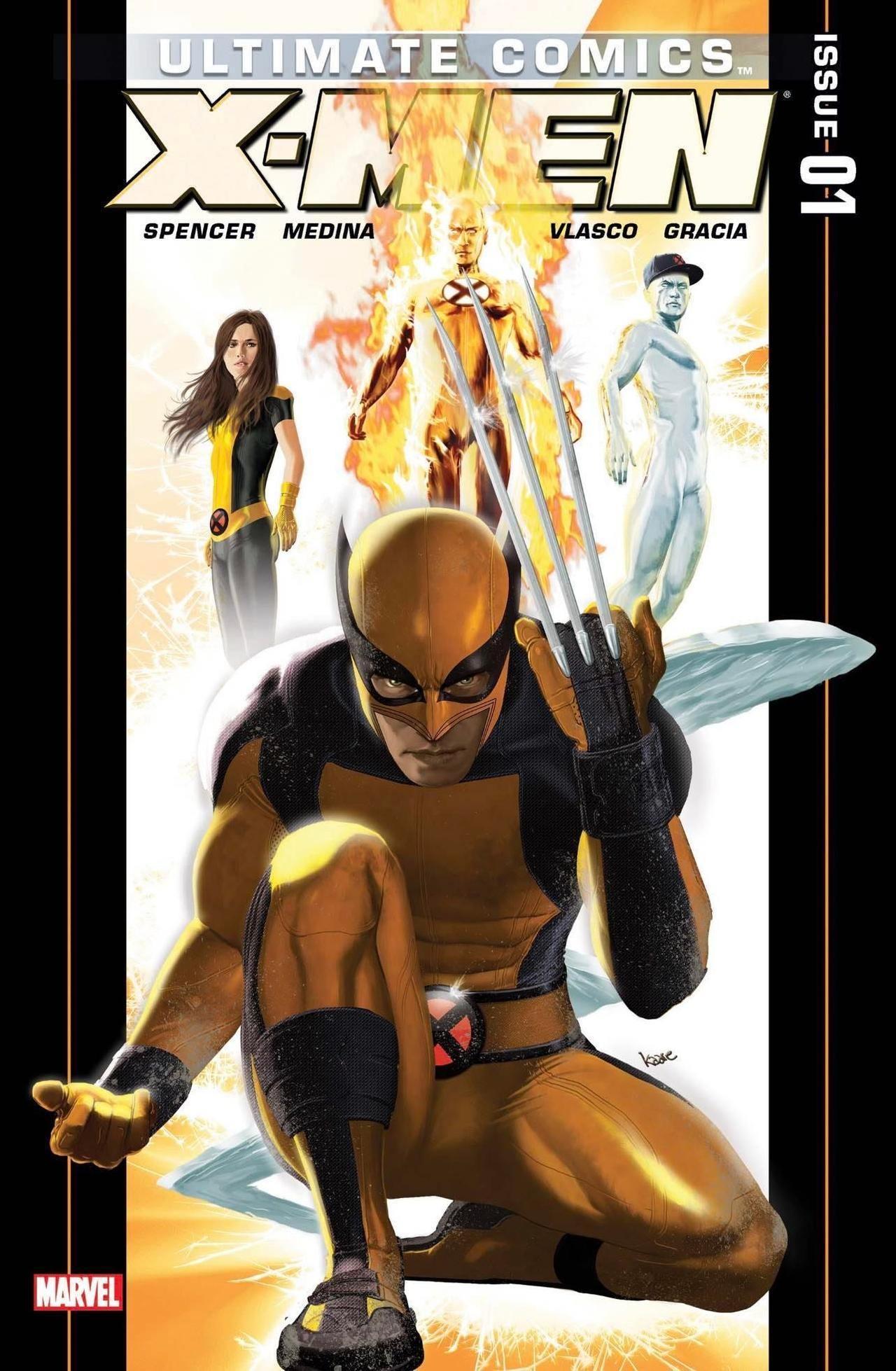
This chronological list was put together by comparing publishing dates, story placements in trade paperback collections, comparing various online chronology lists, and examining the pages of the comics themselves.
- Ultimate Origins #1-5 (2008)
- Ultimate X-Men #1-25 (2001)
- Ultimate War #1-4 (2002)
- Ultimate X-Men #26-60 (2002)
- Ultimate X-Men Annual #1 (2005)
- Ultimate X-Men #61-65 (2005)
- Ultimate X-Men #1/2 (2002)
- Ultimate Wolverine vs. Hulk #1-6 (2005)
- Ultimate X-Men #66-74 (2006)
- Ultimate X-Men Annual #2 (2006)
- Ultimate X4 #1-2 (2005)
- Ultimate Power #1-9 (2006)
- Ultimate X-Men #75-97 (2006)
- Ultimate Fantastic Four/X-Men Annual #1 (2008)
- Ultimatum #1-5 (2008)
- Ultimate X-Men #98-100 (2008)
- Ultimatum: X-Men Requiem #1 (2008)
- Ultimate Comics: X #1-5 (2010)
- Ultimate Comics: X-Men #1-22 (2011)
- Ultimate Comics: Wolverine #1-4 (2013)
- Ultimate Comics: X-Men #23-33 (2013)
- Cataclysm: Ultimate X-Men #1-3 (2013)
- Ultimate End #1-5 (2015)
Once again, for a smoother reading experience, you could follow the series through their trade paperback collections. The trade paperbacks are easily numbered, and you don’t have to worry about placing the annuals or specials in the right order. For a look at how the X-Men weave in and out of special events, please refer to the first list above. If you just want to follow the X-Men’s story in the Ultimate Universe, here is the reading order for their trade paperbacks.
- Ultimate X-Men Volume 1-19
- Ultimate Comics X: Origins
- Ultimate Comics X-Men by Nick Spencer Volume 1-2
- Ultimate Comics X-Men by Brian Wood Volume 1-3
How to read the Ultimates in chronological order
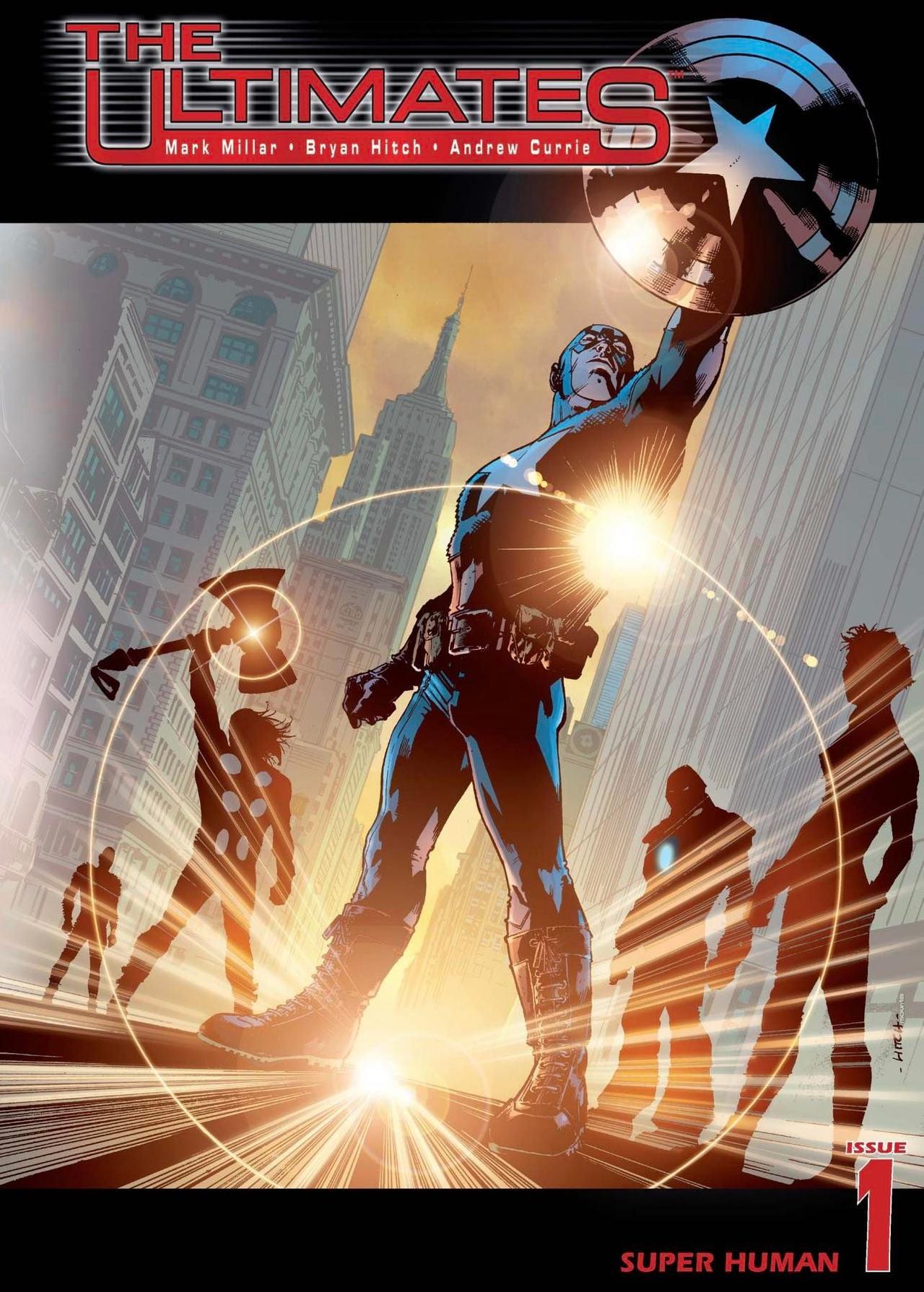
In 2002, Marvel published The Ultimates, which reimagined the Avengers for the 21st century. The first Ultimates series used cinematic sensibilities in its storytelling, framing itself as a comic adaptation of a movie that didn’t exist. Various characters were modeled after Hollywood actors, such as Nick Fury, who was famously drawn to resemble Samuel L. Jackson. A lot of material from The Ultimates was later incorporated into the Marvel Cinematic Universe.
Although the Ultimates were based off the Avengers, they are considered a separate team. In fact, the Ultimate Universe later added their own version of the Avengers. Since the Ultimate version of the Avengers are tied to the Ultimates, and contain some of their members, their comics will be included on the following list.
Below is a list of comics starring the Ultimates in chronological order. This list only includes comics where the Ultimates play a central role. Guest-starring roles and cameos are not included. This list does not contain solo titles such as Ultimate Thor. For a complete listing of all Ultimate Comics titles, please see the list located earlier in the article. In 2015, Marvel launched a new Ultimates title as part of their Marvel NOW publishing initiative. That title is set in the mainstream Marvel Universe, and has no relation to the Ultimate Universe version of the Ultimates. For that reason, it isn’t included here.
This list was compiled by comparing publishing dates, story placements in trade paperback collections, examining online chronology lists, and looking through the pages of the comics themselves. In some cases there might be discrepancies, due to the nature of publishing comics in a shared universe.
- The Ultimates #1-13 (2002)
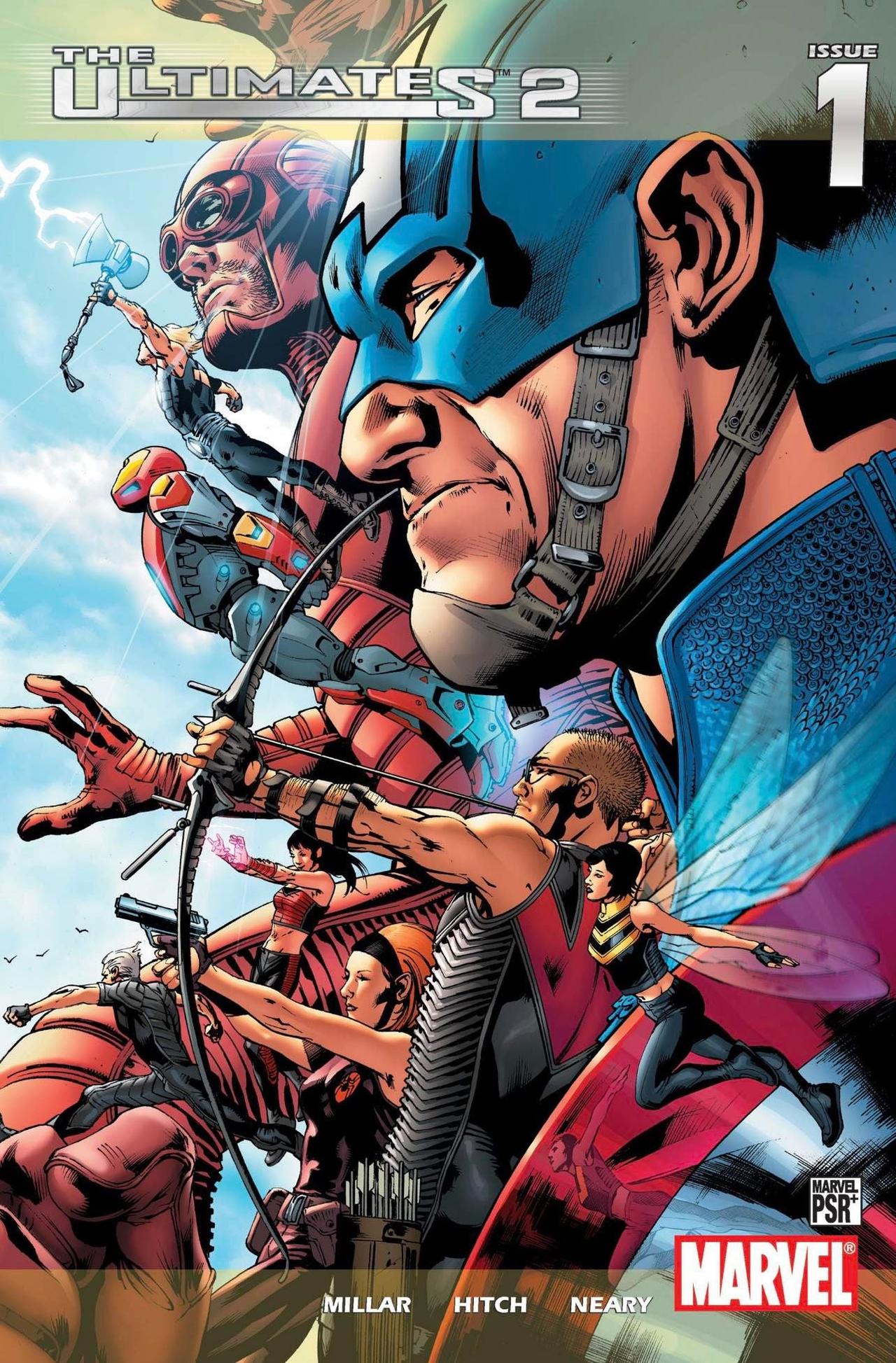
Once again, for a simplified reading experience, you can follow the Ultimates through their trade paperback collections. This will streamline your reading, cutting out some of the tie-ins and other titles that might disrupt the storytelling. To follow the Ultimates through their trade paperbacks, use the following reading order.
- The Ultimates Volumes 1-2
- Ultimate War
- Ultimate Six
- Ultimate Galactus Volumes 1-2
- The Ultimates 2 Volumes 1-2
- Ultimate Galactus Volume 3
- The Ultimates 3
- Ultimatum
- Ultimate Comics Avengers: Next Generation
- Ultimate Comics Avengers: Crime and Punishment
- Ultimate Comics: New Ultimates: Thor Reborn
- Ultimate Comics Avengers: Blade vs. Avengers
- Ultimate Comics Avengers vs. New Ultimate: Death of Spider-Man
- Ultimate Comics: The Ultimates Volume 1-2
- Ultimate Comics: Divided We Fall, United We Stand
- Ultimate Comics: The Ultimates by Sam Humphries
- Ultimate Comics: The Ultimates Disassembled
- Cataclysm: The Ultimates’ Last Stand
- All-New Ultimates Volumes 1-2
What’s next for the Ultimate Universe?

In June 2023, Marvel will publish Ultimate Invasion, a four issue limited series that could feature the return of the Ultimate Universe. The villain known as the Maker has been trying to restore his former home, and that storyline will culminate with this series. Ultimate Invasion is scripted by Jonathan Hickman, who previously wrote Ultimate Hawkeye, Ultimate Thor, and selected issues of Ultimate Comics: The Ultimates. The mini-series will be penciled by Bryan Hitch, the famed artist who helped launch The Ultimates back in 2002.
Promotion surrounding the mini-series seems to hint at the return of the Ultimate Universe. Although Earth-1610 was revealed to have survived in Spider-Men II #5, the rest of the Marvel Universe doesn’t seem to be aware of its existence. Could Ultimate Invasion lead to an Ultimate renaissance? Does this mean the Ultimate Comics imprint will be returning? Time will tell. In the meantime, keep your eyes pealed to Popverse as we continue to cover these developments, and bring you the latest news throughout the Marvel Universe.
Jonathan Hickman and Bryan Hitch are reviving Marvel's Ultimate Universe
Everything you need to know about The Maker, the bad guy in Marvel's Ultimate Invasion
Follow Popverse for upcoming event coverage and news
Find out how we conduct our review by reading our review policy
Let Popverse be your tour guide through the wilderness of pop culture
Sign in and let us help you find your new favorite thing.


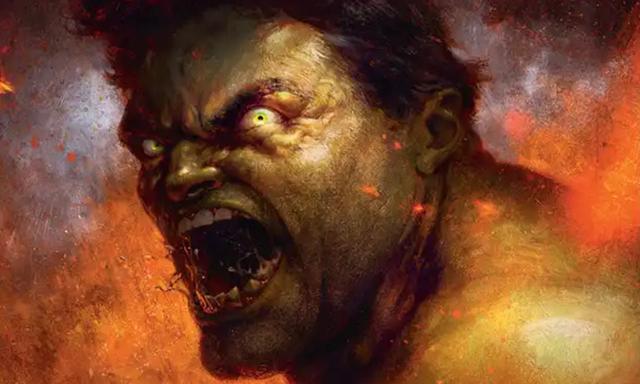

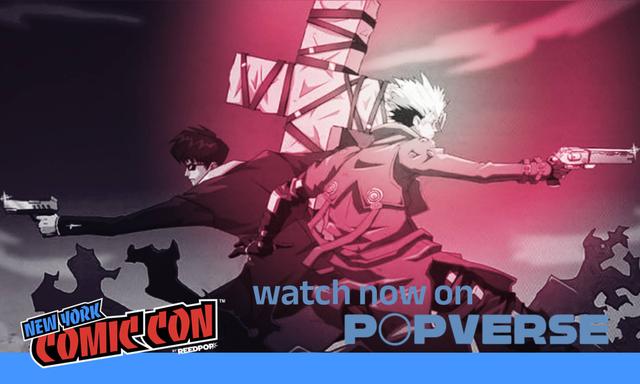
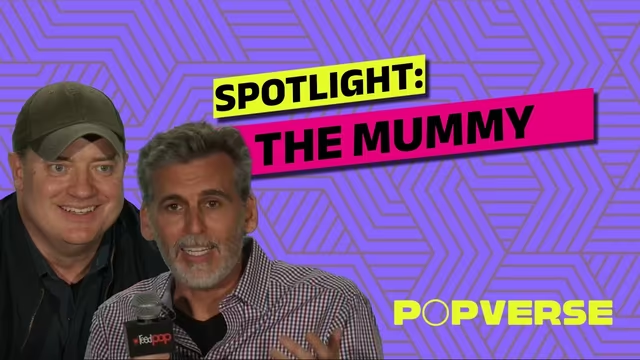

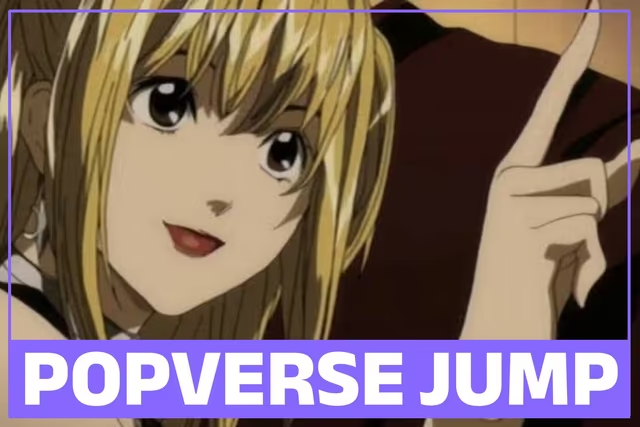
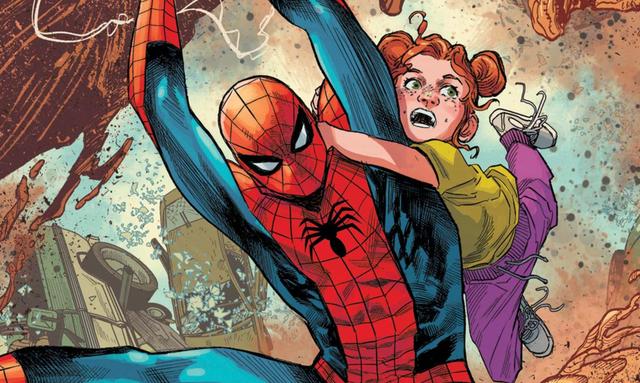
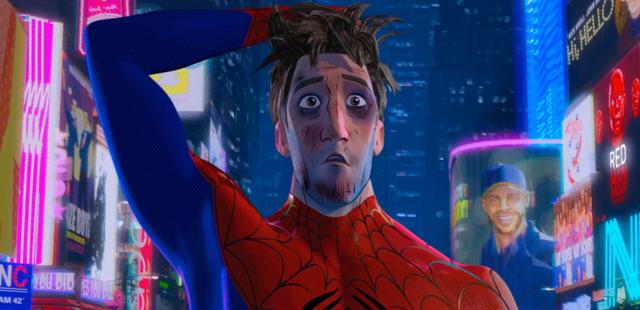






Comments
Want to join the discussion? Please activate your account first.
Visit Reedpop ID if you need to resend the confirmation email.